
Investigation Reports. A 7-year-old girl helped Sussex UK Police Capture an Elusive Child Murderer who was also responsible for kidnapping, sexually assaulting, and killing two 9-year-old girls.
While roller skating near her home in Brighton, an innocent girl was snatched from the street, shut in a car boot, and driven to a wooded spot, where she was molested, strangled, and thrown into a gorse bush, apparently lifeless, but she survived.
Rumors spread quickly, swirling across the estate, and the finger-pointing began. Thousands of people came forward with information, and several names kept cropping up. One of them was Russell Bishop.
Investigators would later discover that Russell Bishop had bundled the seven-year-old into a car boot and drove 14 miles to Devil’s Dyke on the South Downs. There, he strangled her and then stripped and molested her. Afterward, Bishop dumped the girl in dense gorse and left her for dead. He discarded her body in the middle of bushes in the freezing cold.
But she was not dead. She survived. Barely able to stand, she managed to stumble out of the thorns. Rescuers spotted her by the roadside, naked, cold, and terrified, with her skin badly shredded by the gorse.
This time, Russell Bishop would not get away with his crimes. The girl was able to identify him as her attacker. She had seen the person’s face as he strangled her. While unconscious, he sexually assaulted this 7-year-old girl.
In 1990, he was convicted of the abduction, molestation, and attempted murder of a seven-year-old girl. Two other girls had also been strangled. While he was serving that sentence, the court of appeal in 2017 quashed his acquittal of Nicola and Karen’s murders—two 9-year-old girls.
Russell Bishop: Babes in the Wood Murderer Dies (BBC, January 2022)
Bishop was previously tried in 1987 for the murders of two 9-year-old girls but was acquitted due to insufficient evidence by the authorities and forensic experts.
The court heard a blue sweatshirt, allegedly worn by Bishop, was found beside a path behind Moulsecoomb railway station. Jurors were told it smelt strongly of sweat and had red stains on it and was handed into police at Wild Park. The court was told it was put in a brown paper bag and taken to Brighton police station before being transferred to a clear, sealed bag.
Court papers showed that in the first murder trials, Justice Schiemann directed jurors to acquit Bishop if they were unsure of any one of three statements: (1) that the girls were dead by 18:30, (2) that Bishop had worn a Pinto sweatshirt on the night they went missing, and (3) that the Pinto sweatshirt was worn by the murderer.
At the end of a four-week trial in December 1987, the jury delivered its verdicts.
“Not guilty” came the first.
As the words were delivered, mayhem erupted in court, Mr Cheston recalls. Bishop’s brother jumped into the dock, hugging him. As prison officers wrestled him to the floor, Bishop’s father became unwell, seemingly overcome by the scene, while his mother began shouting about his heart.
“The second not guilty verdict was lost in the mayhem,” Mr Cheston added.
“The prosecution fell apart almost from day one,” Mr Cheston said of the 1987 trial.
The star prosecution witness – Bishop’s partner and mother of his children, Jennie Johnson – had retracted her earlier claim that a blue sweatshirt found close to the murder scene belonged to Bishop. The jumper, with the word “Pinto” written on it, was a crucial piece of evidence.
After just two hours of deliberation, the jury found Bishop not guilty.
“It was absolutely no surprise,” Mr Cheston says. “There was no other possible verdict, and that had been clear from the first week of the trial.”
Due to double jeopardy, he could not be tried again.
The investigation by Sussex Police into the murders of Karen and Nicola never closed.
But it wasn’t until advances in DNA testing that they could re-examine the evidence. A forensic scientist retested the crucial blue Pinto sweatshirt in 2014, finding DNA evidence linking it to Bishop’s home and the girls. A previously unexamined sample from Karen’s forearm uncovered a “one-in-a-billion DNA match to Bishop.” It was a big breakthrough.
The DNA breakthrough led to a fresh trial under double jeopardy laws. Bishop’s 1987 acquittal was quashed, and a second trial was ordered.
The DNA came from a blue Pinto sweatshirt initially identified as belonging to Bishop by his former partner, Jennifer Johnson, who then denied it in the first trial.
In the second trial, the prosecution said DNA science not available in 1987 had linked the sweatshirt with Bishop and the girls, and also samples taken from Karen’s arm produced a one-in-a-billion DNA match to Bishop.
In May 2021, Bishop’s girlfriend in 1986, Jennifer Johnson, who also had children with him, was sentenced to six years in prison for perjury and perverting the course of justice after lying in the original trial about a sweatshirt that linked Bishop to the murders. Johnson had told police the sweatshirt was Bishop’s but changed her story during the trial, undermining the prosecution.
How Double Child Murderer Escaped Justice (Sarah Grealish, The Sun UK, January 2022)
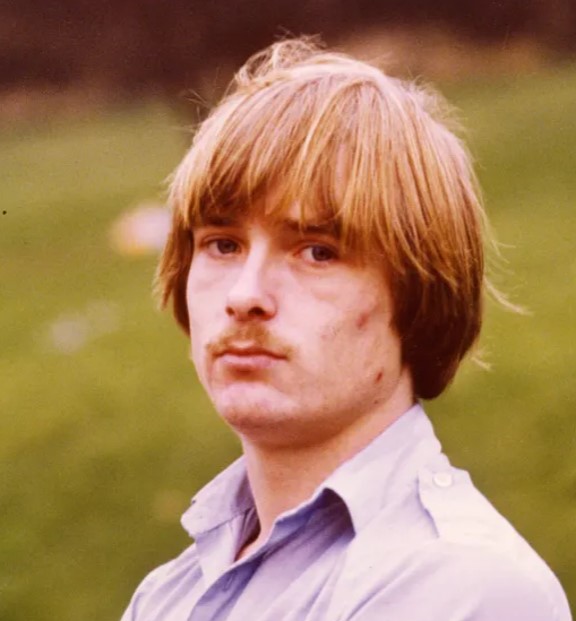
Bishop had escaped justice more than three decades after murdering nine-year-olds Nicola Fellows and Karen Hadaway in 1986.
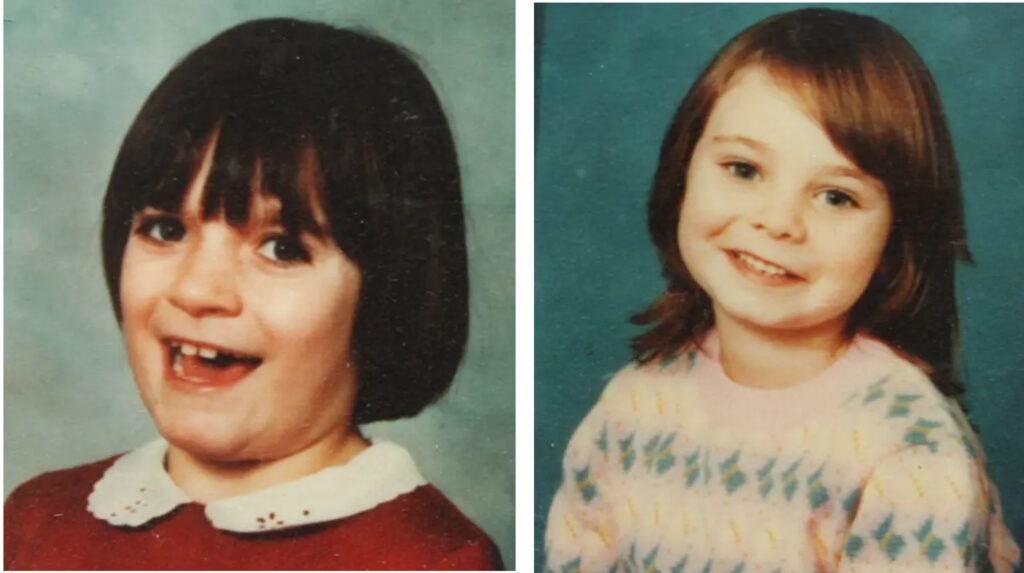
The case—branded Babes in the Wood—was Sussex Police’s longest-running murder inquiry as he dodged being caught in plain sight. He evaded punishment by faking alibis, deflecting guilt, and hiding behind police blunders.
Bishop, of Brighton, East Sussex, lured best friends Nicola and Karen to a secluded den in the city’s Wild Park, where he sexually assaulted and strangled them. He was 20 years old at the time of the murders and working as a roofer in the Hollingdean area of Brighton.
Bishop joined the search for the two schoolgirls just hours after brutally murdering them in order to fool cops of his innocence.
Even before the murders, his behavior towards young girls was a cause for concern.
The court heard how he had lusted after girls doing handstands in the park, saying, “Wait until she is 13 or 14.”
He also got to know an 11-year-old girl in 1985, whom he went on to groom for sex in a series of letters while he was in prison awaiting trial two years later.
In childish handwriting, he peppered his love letters with hearts and kisses while bragging about his sexual prowess, telling the girl he was “a man, not a boy.”
Upon his release, Bishop faced a barrage of animosity in the community, with windows smashed and petrol put through his letter box.
He claimed he developed a mental illness as a result and even considered taking his own life.
Bishop denied he was a pedophile and claimed he acted out of vengeful rage and wanted to “belittle and shame her” when he attacked her at Devil’s Dyke, on the South Downs in Sussex.
But Detective Superintendent Jeff Riley, who led the cold case investigation, said his evidence summed up his “wicked” nature, describing him as arrogant and “massively dishonest.”
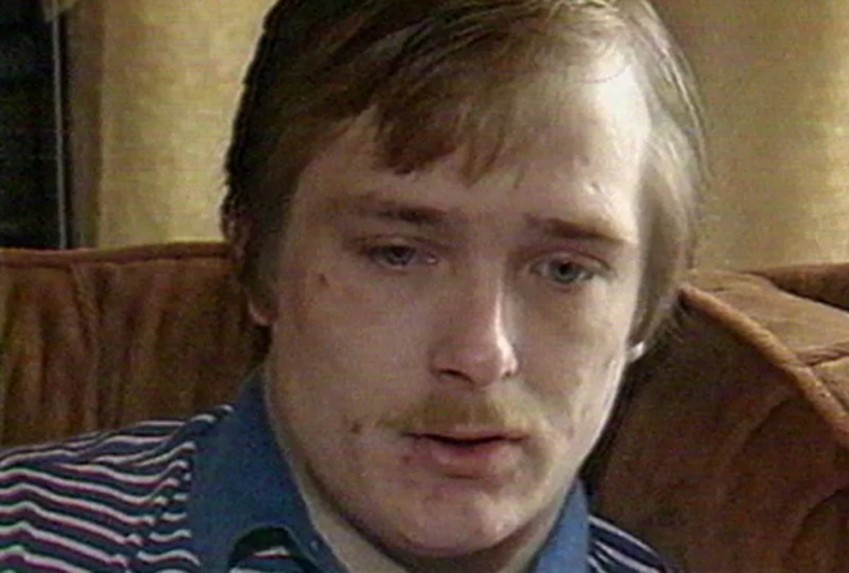
In 1990, he decided he “might as well” do what he had been accused of and snatched a seven-year-old girl, he told jurors.
Three years after his acquittal, on Sunday, February 4, 1990, he tried to kill another girl in Brighton. He snatched the seven-year-old girl off the street and drove to a well-known beauty spot outside the city. There, he sexually assaulted and tried to strangle her before leaving her unconscious in the woods. The girl survived and managed to identify Bishop as her attacker. She also described the red car he was driving when he abducted her.
Bishop, the prime suspect, had been seen in a red car earlier that week. When police went to arrest him on a Sunday, he was washing his red car on a cold evening. He was charged with the attempted murder, kidnapping, and indecent assault of the seven-year-old and sentenced to life in prison.
It was a bittersweet redemption. Tire marks matching his car were found at Devil’s Dike. A taxi driver found a bundle of clothing near where Bishop lived. Blood and semen were found on the girl’s clothing.
The young girl was asked to identify the suspect from a line of men. She identified Bishop. At the trial, the girl, now 8 years old, testified.
The case was taken to the Court of Appeal. It had been a long time since Bishop’s first trial, and laws about retrying suspects for the same offense had changed.
Double jeopardy laws in the U.K. were scrapped in 2005, meaning Bishop’s acquittal could be quashed.
Det Supt Jeff Riley recalled the moment Bishop—still in prison for the 1990 attack—was re-arrested in 2016.
“That would have been such a massive moment for him,” he told the BBC. “The realisation would have dawned on him that this stuff hasn’t gone away, the police haven’t forgotten about it, and you’re here to answer questions about it 30 years later.”
On October 16, 2018—32 years after the murder of Karen and Nicola—Bishop entered Court 16 of London’s Old Bailey. Witnesses—including the girls’ mothers, police officers, and forensic teams—were called on to give evidence against him for a second time.
Some came with faded memories from 32 years ago. The court heard how Karen and Nicola lived three doors away from each other on a street in the Moulsecoomb housing estate in Brighton. They attended different schools but played together regularly. Like other children, they were afraid of the dark, and, like other children, they knew not to go off with strangers.
Thursday, October 9, 1986, began, as usual, the trial heard. Karen and Nicola both went to school before returning home and going out to play. Karen’s mother told her daughter not to be long as she left the house. It was the last time she was to see her alive.
Susan Fellows last saw her daughter, Nicola, when she looked out the window at about 5:00 pm. The two girls were playing in the street with a roller boot.
By 5.20 pm, Karen’s mother began to worry. She and Susan searched the woods and called the girls’ names. As dusk turned to dark, worry became panic. The police were called, and news the girls had gone missing spread quickly.
A friend, then aged 14, later said she had bumped into them at about 6.30 pm. She remembered Nicola repeatedly saying, “Come on, let’s go over to the park.”
Teams searched the area late into the evening. The girls’ bodies were discovered the following day.
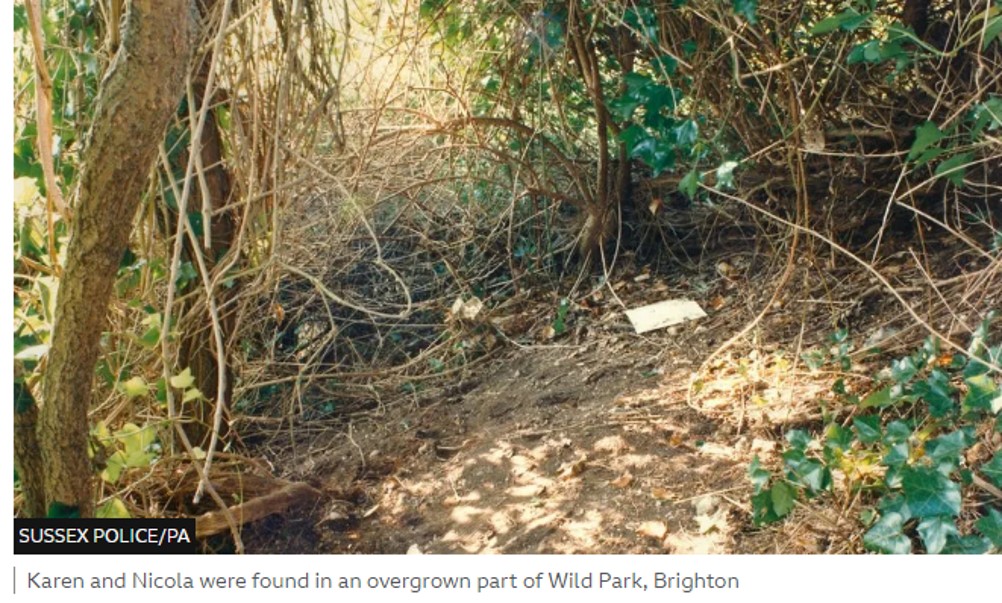
Two men made the discovery, and they had been joined at the scene by Mr. Bishop and PC Paul Smith. Mr Tomlinson said after PC Smith pointed to a clearing, he went to look.
“I walked along the path,” he said. “I was conscious that I wanted to keep the disturbance of the scene to the minimum. There was still an amount of undergrowth. With the position of the bodies, it was difficult for me to see what had happened. I was able to see the two bodies, but they were not in a comfortable position. I got the impression one body had been almost thrown or tossed against the other.”
They were found in a “den” so overgrown that a police officer had to crawl through bracken to get to them. They were lying next to each other. He said one of the girls looked pale and about to pass out. Mr Tomlinson said he then ordered the whole scene to be sealed off.
Retired Supt David Tomlinson told jurors how Nicola Fellows and Karen Hadaway were found dead in a woodland den in Wild Park, near Brighton.
The Old Bailey heard Bishop was 20 years old at the time. He lived with his partner, Jennie Johnson, but also had a 16-year-old girlfriend.
He knew the girls. He and his girlfriend would get them to run errands. Jurors were told how Bishop searched for the girls with his dog, Misty after they went missing. He was one of the first at the murder scene. He followed the police officers, asking questions, and trying to inject himself into the investigation. Without an alibi, he became one of the main suspects.

Prosecutor Brian Altman QC said Bishop had set out to create a smokescreen and that, in reality, he had killed Nicola and Karen for his own sexual gratification.
Mr Altman told the court all three victims were prepubescent girls targeted in Brighton shortly before dusk. All the offenses involved strangulation followed by sexual assault, with the victims hidden in wooded or overgrown areas, he said.
Mr. Altman also said that in both cases, Bishop attempted to clean himself, his clothes, or his car. He said in 1986, Bishop washed his clothes and had a bath when he got home and after the 1990 attack, showed “forensic awareness” in cleaning his car.
Earlier, jurors heard Bishop had joined the search for Nicola and Karen and was among the first to find their bodies on 10 October 1986 – the day after they went missing – and had appeared grief-stricken.
Mr. Altman said the then 20-year-old told a neighbor he would never forget the sight of the girls’ bodies, but added: “If he did appear to be grief-stricken, then he was play-acting.”
When the bodies were found, Bishop was instructed to stay back after he made to move forward for a closer look. A police officer crawled through the bracken and found Karen lying across Nicola with her head in her friend’s lap, Mr Altman said.
Bishop later told the neighbor he had found the girls with three mates and said he obtained clothing from their parents and gave it to his dog to sniff out the children, the prosecutor said.
Bishop also claimed he had felt for a pulse on one of the girls. But the Old Bailey heard he later told a friend he was not bothered about finding the girls at all and allegedly said: “One was lying on her back, and the other one was lying across the other one’s stomach. “One had blood coming from the corner of her mouth.”
Mr. Altman said: “The prosecution suggests that the only way the defendant could have known the detail of the girls’ positions in relation to each other was not because he saw it at the time of finding, but quite simply because that is how he left them, having killed them.”
“You may conclude he showed you his true colours—an abusive, aggressive, controlling man,” Mr Altman said. “He is a coward to refuse to continue his evidence before you, and he is a cowardly paedophile who thinks nothing of attacking a seven-year-old child.”

Russell Bishop: Paedophile Guilty of 1986 Babes in the Wood Murders (BBC, December 2018)
A convicted pedophile was found guilty of murdering two schoolgirls who were found strangled and sexually assaulted near Brighton 32 years ago.
Russell Bishop, 52, had protested his innocence since the bodies of Nicola Fellows and Karen Hadaway were found. Cleared of their murders in 1987, Bishop went on to attack a seven-year-old girl within three years, leaving her for dead in 1990, but she survived. He was convicted of the double murder in a second trial at the Old Bailey. After Nicola and Karen were found dead, the case became known as the Babes in the Wood.
The guilty verdicts came exactly 31 years to the day of Bishop’s original acquittal in 1987.
The 52-year-old, a convicted pedophile, painted himself as a victim, someone who had been wrongly charged with the girls’ murders.
It wasn’t until the prosecuting barrister, Brian Altman QC, cross-examined him that cracks appeared. Under pressure, he became tense, dismissive, and testy.
“Who wants to be in prison? I bloody don’t,” he replied to one question. “Don’t stand there and make me look like an idiot,” he said. At one point, unhappy with the questioning, he turned to the judge and said: “Excuse me, is this legal?”
He raised his voice and rushed his words when he was asked about the 1990 attack on the seven-year-old. He said he had sexually assaulted the girl to “shame and belittle” her but denied he was a pedophile.
What was his understanding of the word paedophile? “Someone who believes they are not doing anything wrong,” he replied. “My case doesn’t come into that bracket.” He lasted less than 90 minutes under this forensic questioning.
Defendants cannot be forced to give evidence in their own defense, and Bishop had had enough. Towards the end of the trial, his barrister told the judge his client had decided he didn’t want to attend the rest of the hearing. Bishop couldn’t “survive” any longer at London’s Belmarsh Prison, where he was being held during the trial, he had said.
Bishop was described in court as a “violent” and “predatory paedophile.” He was a “coward” who “played people with lies and deception.” But those lies – the ones he had told the girls’ families, the police, and the jury – finally caught up with him.
No one will ever know what happened that night and what he’d said to the girls.
The two girls, aged nine, who were scared of the dark, went missing from their homes after they had gone out to play on 9 October 1986. They were found in Wild Park the next day, lying together in a woodland den as if sleeping.
The bodies of Karen Hadaway and Nicola Fellows had been found in a dense wooded area of Wild Park, on the edge of Brighton, just half a mile from their homes. They had been sexually assaulted and strangled. The press dubbed it the “babes in the wood” murder case.
The trial heard former roofer Bishop had spotted the girls playing in the park near their home and attacked them.
On 10 October, he had joined the search for Nicola and Karen, claiming his dog was a trained tracker, and was nearby when two teenagers spotted the girls’ bodies. Afterward, Bishop gave conflicting accounts to police and produced a series of fake alibis. But he described details of the murder scene which only the killer could have known, jurors were told.
Bishop was jailed in 1990 for the attempted murder of a seven-year-old girl at Devil’s Dyke near Brighton. In the nine-week trial, which presented DNA evidence, Bishop pleaded not guilty. Russell Bishop was sentenced to a minimum of 36 years for the murders of nine-year-olds Nicola Fellows and Karen Hadaway in Brighton in 1986. He was convicted in December 2018, having been cleared at an earlier trial in 1987.
After Bishop’s conviction, Nigel Pilkington, from the Crown Prosecution Service, said the verdicts marked the end of a long fight for justice by the families, praising their “remarkable resilience.”
He described Bishop as an “extremely dangerous” man who had been convicted on “overwhelming and incontrovertible evidence.” Mr Pilkington also said Bishop had tried to blame Nicola’s father to create the “most havoc” possible.
Calling Bishop a “wicked” paedophile, Det Supt Riley said the murder case was one of the most “high-profile and complex” in Sussex Police history and one that still affected people in the city.
Bishop was a prisoner of HMP Frankland in County Durham. He died in hospital, a Justice spokesperson said. They said the Prisons and Probation Ombudsman had been informed.

Russell Bishop: Babes in the Wood Murderer Dies (BBC, January 2022)
Russell Bishop, who killed two nine-year-old girls in 1986 in a case that became known as the “babes in the wood” murders, has died of brain cancer. Bishop, 55, died 1,137 days after his conviction for the schoolgirl murders. He had been diagnosed with bowel cancer in 2020, which spread to his brain.
In a long-running investigation, Bishop was convicted in 2018 for sexually assaulting and strangling to death Nicola Fellows and her best friend, Karen Hadaway, both nine, in woodlands in Brighton.
Peter Kyle, the Labour MP for Hove, described Bishop as a “hateful man” whose “murders and deceit caused endless pain to so many people.”
World’s Most Evil Killers—Season 5, Episode 2—Russell Bishop (YouTube Video)
An investigation into the man known as the ‘Babes in the Wood Killer,’ who evaded justice for over 30 years after strangling and molesting two nine-year-old girls in 1986.
“I have no doubt that you were a predatory paedophile,” the judge said at the Old Bailey. “The terror that each girl must have suffered in their final moments is unimaginable.”
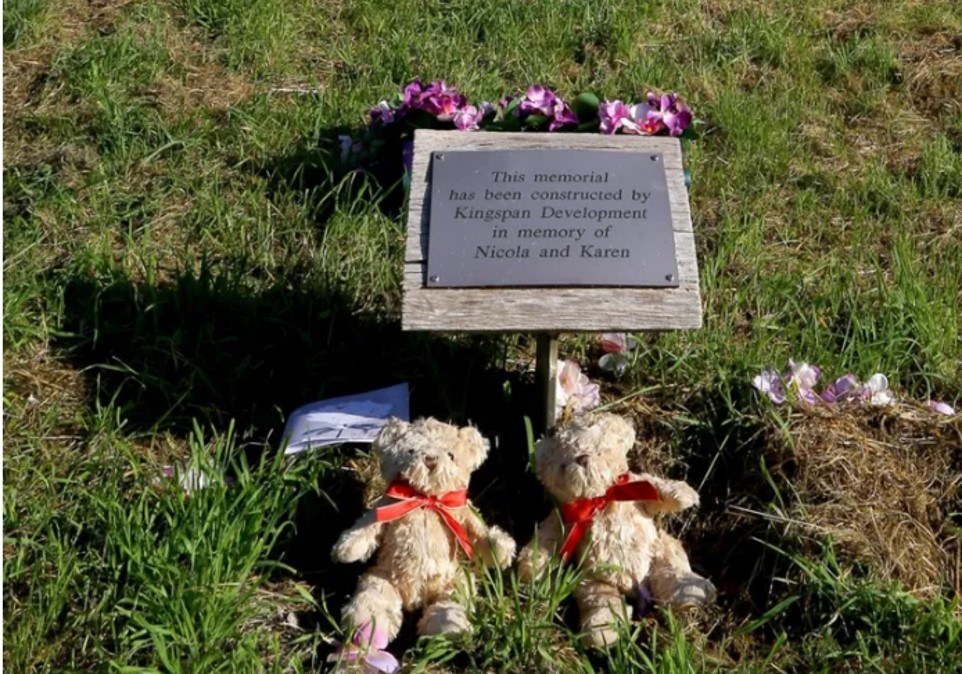
How a Child Rapist and Murderer Almost Got Away with His Crimes in England
ADD COMMENTS BELOW
- Ways to Pay It Forward and Change Lives
- Balancing Success: Practical Self-Care Strategies for Entrepreneurs
- Email Marketing Campaigns for Small Business Owners
- How to Create an Ergonomic Workspace at Home or Work
- Backpacking, Hiking, and Camping Safety Guides
- Guides to Backpacking, Mountain Biking and Hiking Georgia
- Moving and Relocating to Atlanta: How to Find Your New Home
- Money Matters: Insider Tips to Buying a Home
- Renting vs Owning a Home
- Ways to Build Positive Credit
- Do It Yourself Credit Improvement Process
- A Trail of Clues to the Murder of Nicole Brown Simpson
- How Centra Tech’s Bitcoin Cryptocurrency Scheme Was Hatched and Discovered
- Starting a New Business as a New Mother: Tips for Thriving
- Guides to Backpacking and Hiking the Carolinas
- Guides to Hiking New York State and New Jersey
- Guides to Backpacking and Hiking Canada
- Guides to Hiking California and Nevada
- The Tragic Murder of Rebecca Postle Bliefnick
- How a Grad Student Murder Spotlights Female Joggers’ Safety Concerns
- How Massive Commercial Financial Fraud Was Discovered in Singapore
- Guide to Martha Stewart’s Hugely Successful Concept and Art of Presentation
- Did Billy Ray Turner Conspire with Sherra Wright to Kill Former NBA Player Lorenzen Wright?
- How Operation Rebound’s 7-Year Cold Case was Finally Solved
- Stylish Outdoor Fire Pits and Patio Heaters
- Mastering DIY Marketing: Essential Skills and Strategies for Small Business Owners
- Great Deals on Snug UGG All-Season Boots
- How a GeoLocation Expert Tracked a Killer
- Transgender Law Enforcement Officer Denied Medical Coverage for Gender Dysphoria
- How Video Surveillance Cameras Helped Identify and Track a Killer
- How Investigators Solved the Murder Mystery of Army Sergeant Tyrone Hassel III
- How a Love Obsession Led to the Brutal Murder of Anna Lisa Raymundo
- How Stephen Grant Tried to Get Away with Killing His Wife
- How Unrelenting Catfish Schemes Led to Fatal Suicide
- How Pain Clinic Owners Turned Patients’ Pain into Enormous Profits
- How to Recognize a Pain Pill Mill in Your Community
- How Authorities Have Shuttered Georgia Pain Clinics Massive Pain Pill Distributions
- How Pain Doctors Massive Opioid Prescriptions Lead to Pain Pill Overdose Deaths
- How Authorities Are Dismantling Pennsylvania Pain Clinics Prescribing Excessive Amounts of Opioid Pain Pills
- How Authorities Are Dismantling Alabama Pain Clinics Pain Pill Schemes
- How the Gilgo Beach Homicide Investigation Has Progressed
- How NYC Architect was Linked to Three Women’s Remains Found on Gilgo Beach
- How Investigators Discovered a Serial Killer Hiding in Plain Sight
- How Police Discovered the Concealed Murders of the Chen Family
- How a Vicious Child Custody Battle Led to the Murder of Christine Belford
- How Authorities Finally Captured a Serial Killer in Southern Louisiana
- How Authorities Are Busting Pill Mills in The Carolinas
- Unsolved Mystery: Triple Murder at the Blue Ridge Savings Bank
- How Montgomery County Police Quickly Unraveled the Murder of a Retail Store Employee in Bethesda
- How a Child Rapist and Murderer Almost Got Away with His Crimes in England
- How Authorities Are Dismantling Pill Mills in the United States
- How Federal Agencies Are Dismantling Michigan Pain Clinic Doctors Scheme to Distribute Enormous Amounts of Opioid Pain Pills
- How Authorities Are Cracking Down on Virginia Pain Clinics Massive Pain Pill Operations
- How Authorities Are Honing in on Kentucky Pain Clinics Distributing Opioid Painkiller Pills for Profit
- How Federal Agencies Are Shutting Down Maryland Pain Clinics Operating as Pill Mills
- How Federal Agencies Are Dismantling New York Pain Clinics Vast Pain Pill Operations
- How the Senseless Murder of Tequila Suter Was Quickly Solved
- How Authorities Are Dismantling Ohio Pain Clinics Prescribing Excessive Pain Pills
- How Authorities are Dismantling Tennessee Pain Clinics Prescribing Massive Quantities of Opioid Pain Pills
- How State and Federal Agencies Are Shuttering California Pain Clinics Huge Distribution of Opioid Pain Pills
- How Authorities Are Shutting Down Texas Pain Clinics Enormous Pill Prescriptions
- How Authorities Are Cracking Down on Rogue Pain Clinics in Florida
- George Brothers Used Pain Clinics to Disburse Oxycodone Pain Killer Pills
- How Authorities Have Convicted Pharmacists Fulfilling and Dispensing Massive Amounts of Pain Pills
- Timeline of Events Leading to Rudy Giuliani’s Legal Troubles
- Georgia Election Workers Defamation Lawsuit and Trial
- Rudy Giuliani’s Election Fraud Allegations and Ensuing Lawsuits
- British Singer George Michael’s Last Christmas
- Shaping Tomorrow’s Leaders
- Kathleen Peterson’s Mysterious Staircase Death: Accident or Homicide?
- How Police Officer Stephanie Lazarus Almost Got Away with Murder
- Mysterious Staircase Death Investigations
- Elizabeth Ratliff’s Mysterious Staircase Death in Germany
- The Death of Vincent Foster Remains a Mystery 30 Years Later
- Biloxi Murder Conspiracy: A High-Stakes Crime